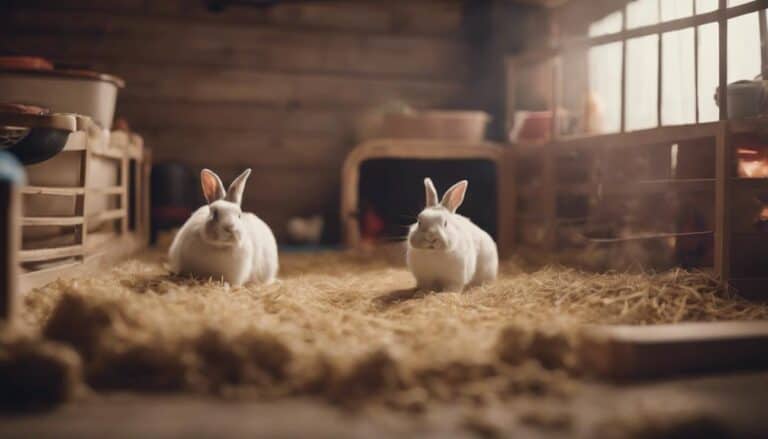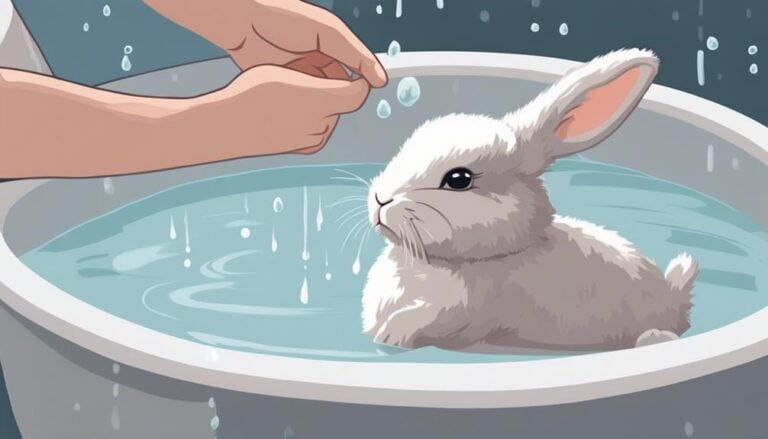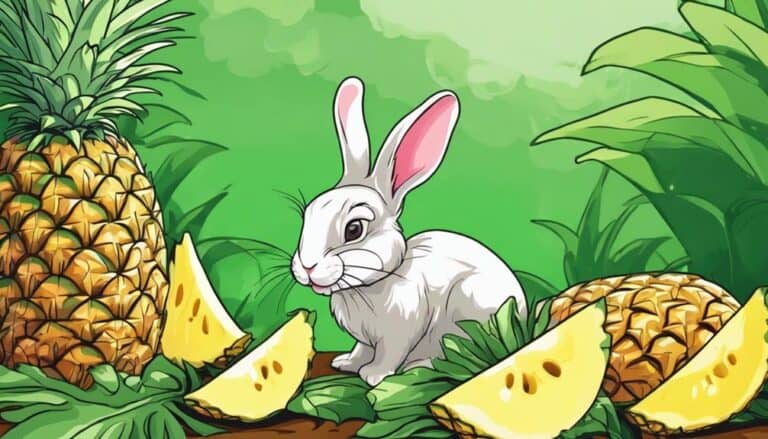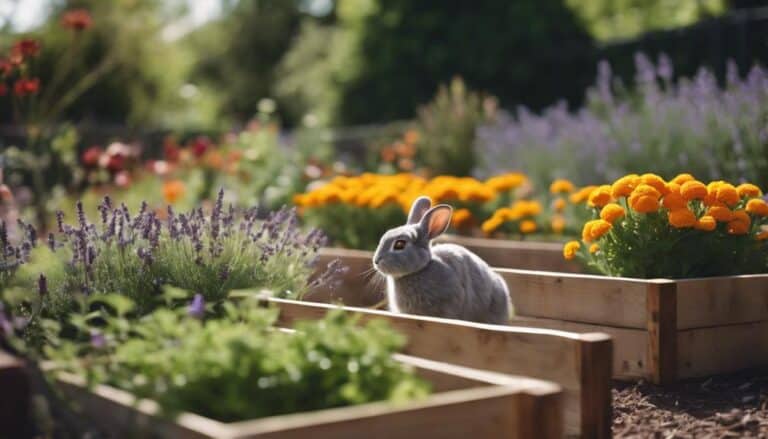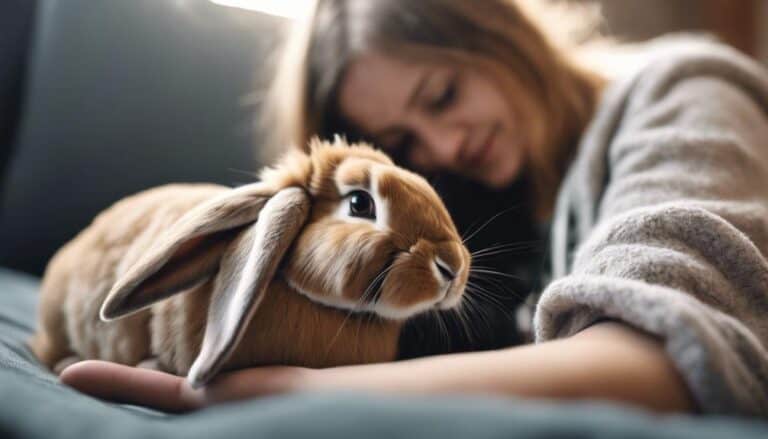When you're telling bunnies and rabbits apart, remember this: Bunnies are smaller and more dainty, while rabbits are bigger with long ears and legs.
Rabbits love hanging out in groups, using body language, sounds, and scent to chat with each other. Bunnies are all about breeding any time of the year, but rabbits have specific mating seasons and take longer to have babies.
Pet rabbits get super close to humans and show off some cool behaviors. Knowing about their fur, how they adapt to different places, and their survival skills is key to taking good care of them.
These details are the basics for recognizing and enjoying these lovely little creatures.
Contents
Key Takeaways
Bunnies are smaller than hares, with shorter ears and legs. They are pretty cute and fluffy!
Rabbits enjoy being in social groups because they like having friends to hang out with and talk to. They are very social creatures.
Rabbits are great diggers and create deep burrows with lots of tunnels for nesting. They like to have cozy homes underground.
Bunnies have babies all year long, and their pregnancies are shorter compared to rabbits. They are quite fertile little creatures!
Domestic rabbits love forming strong bonds with humans. They have unique behaviors that make them great pets.
Physical Characteristics and Size
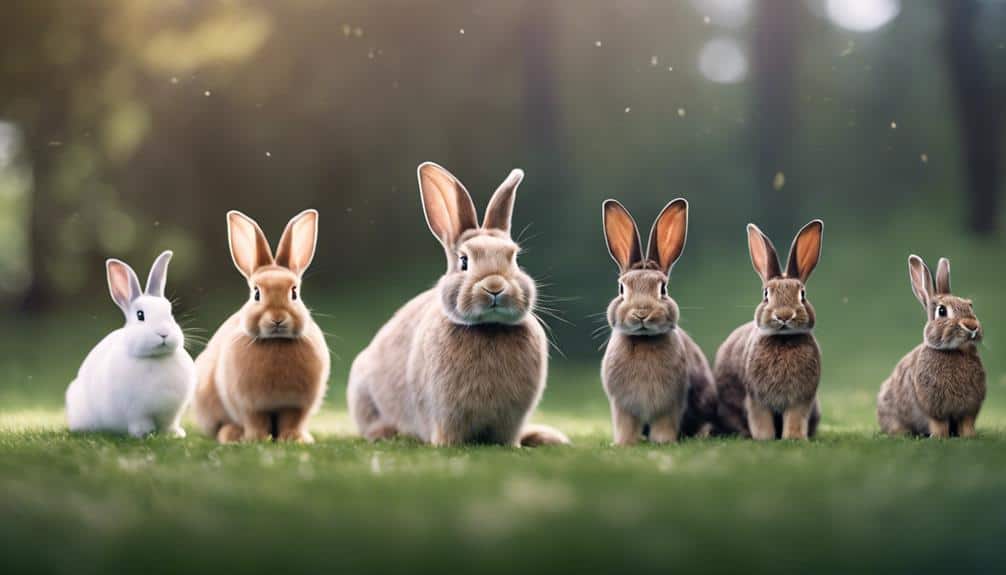
When you look at bunnies and rabbits, you can tell them apart by their size and physical traits. Rabbits are generally smaller than hares. They've a petite build, which you can see in their overall body size. Their ears and legs are also shorter compared to hares.
This smaller size helps them be nimble and quick, adapting well to their surroundings. Understanding this size difference is key in recognizing these cute animals. It affects how they search for food and avoid predators.
Social Behavior and Interaction
When it comes to bunnies and rabbits, understanding how they interact socially is important. These animals have a strong need for companionship and communication within their groups. Rabbits are social creatures that thrive when they're together, playing and grooming each other in their burrows. In these bunny communities, there's a social order where dominant rabbits control resources and mating opportunities.
Communication among rabbits is diverse and includes body language, sounds, and scent marking. They use these methods to set boundaries and keep their group united. Socializing with other rabbits is crucial for their well-being. It gives them company, mental stimulation, and a feeling of safety. Surprisingly, pet rabbits can also bond with their human owners, seeking love, attention, and interaction for emotional support.
Understanding and valuing the social needs of rabbits is key to keeping them happy and healthy. Whether they're interacting with other rabbits or forming connections with people, social behavior plays a big role in the lives of these amazing animals.
Nesting Habits and Environments
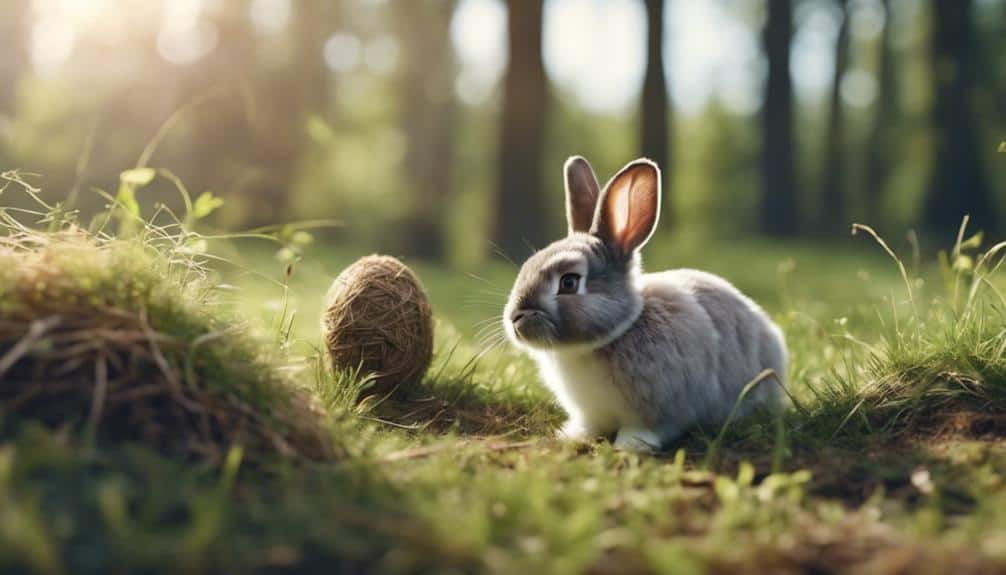
Rabbits really know how to make themselves cozy! They dig deep burrows underground, creating intricate tunnel systems to keep themselves and their babies safe from predators and harsh weather. Inside these burrows, they line their nests with soft materials like grass and fur, ensuring a warm and comfy space for their little ones.
When it comes to picking the perfect spot for their burrows, rabbits are quite picky. They look for hidden and secure locations, like dense bushes or secluded areas in fields, to minimize any potential risks or disturbances. These fluffy creatures are smart about where they settle down!
Reproduction and Offspring Development
When it comes to bunnies and rabbits reproducing and raising their babies, there are some really interesting differences. They've unique ways of mating, carrying their young, and taking care of their little ones. Let's take a closer look at how these cute animals bring new life into the world and nurture their offspring.
Bunnies and rabbits have different breeding behaviors. Bunnies are known to breed year-round, while rabbits tend to have specific breeding seasons. This means bunnies can have babies at any time, while rabbits have a more defined mating period.
The gestation periods also vary between bunnies and rabbits. Bunnies have a shorter gestation period of around 30 days, while rabbits have a longer gestation period of about 31-33 days. This means bunnies give birth to their kits a bit sooner than rabbits.
When it comes to caring for their young, both bunnies and rabbits are quite attentive mothers. They build nests for their babies and provide warmth and protection. They also nurse their young with milk until they're old enough to eat solid food.
Bunnies typically have larger litters compared to rabbits. A bunny can have up to 14 kits in a litter, while rabbits usually have around 4-8 kits. This means bunnies have more babies to care for at once.
Breeding Behaviors Explained
Breeding rabbits is a quick process, lasting only about 28-31 days. They've lots of babies throughout the year because they breed often and rapidly. Let's look at how rabbits reproduce to understand why they're so good at increasing their population:
Rabbits are famous for having lots of babies at once. A female rabbit, called a doe, can have up to 14 babies in one litter. That's a lot of little bunnies at once!
When it comes to taking care of their babies, female rabbits are on top of it. They make sure their babies stay warm, fed, and safe. They're like super moms in the animal world!
Baby rabbits, called kits, grow up fast. They open their eyes when they're about 7-10 days old and stop drinking their mom's milk at around 3-4 weeks. This helps them get ready to be independent bunnies.
Gestation Periods Compared
Hares take longer to have babies, around 42 days, and usually have smaller litters of 2-4 leverets. On the other hand, rabbits have a shorter gestation period of about 30 days and have larger litters of 4-12 kits. This faster baby-making process helps rabbits grow their population quickly and adjust to different habitats.
The reason for hares' longer gestation period might be because they prefer a more solitary lifestyle. This allows them to give birth to stronger and more independent offspring. In contrast, rabbits' shorter gestation period supports their habit of breeding a lot.
Understanding these gestation periods gives us a peek into how rabbits and hares survive in the wild. Hares choose to take their time with pregnancy to match their evolutionary needs, while rabbits stick to a quick turnaround to keep up with their busy breeding schedule.
Young Ones Care
If you want to know more about taking care of baby rabbits and hares, it's important to look into how they reproduce and how their offspring develop. Baby rabbits, or kits, are born without fur, unable to see, and depend on their mom for warmth, food, and attention. Let's dive into three important things to know about looking after rabbit kits:
So, mother rabbits feed their babies once or twice a day, giving them super nutritious milk that helps them grow really fast. It's like a power-up for the little ones!
Around 10 days old, the kits start to open their eyes, slowly getting the hang of seeing things while still needing their mom to show them the ropes. It's like they're getting their vision upgrade!
At about 3 weeks old, young rabbits begin to explore and nibble on solid food, moving on from just drinking milk. They start to have a more diverse diet, trying out new things after relying on their mom's milk. It's like they're stepping into the world of food adventures!
Domestication and Companionship
When you look into Domestication and Companionship in rabbits, it's important to know how the process of domestication has influenced their behavior and traits.
Pet rabbits can form strong bonds with their human friends, showing affection and seeking attention. They've unique behaviors that set them apart from wild rabbits, making rabbit companionship a fascinating experience.
Domestication Process Explained
Around 1,400 years ago, people in France and Spain started the process of making rabbits more friendly and comfortable around humans. This led to the creation of rabbits that enjoy being around people or other rabbits. Knowing how this happened can help us understand why rabbits and humans can become so close:
So, first things first, people started picking specific rabbits to breed together. They did this for hundreds of years, which resulted in different types of rabbits with their own looks and personalities.
Now, these domestic rabbits aren't loners. Nope, they're actually pretty social animals. They love hanging out with their owners and other rabbits, forming strong connections. They show their love by grooming themselves and seeking attention.
Taking care of domestic rabbits involves a few key things. They need a good, balanced diet, plenty of exercise, and a safe place to live. By making sure they've these things, we can keep them happy and meet their need for companionship.
Benefits of Rabbit Companionship
Rabbits have been domesticated to be great companions, offering love, comfort, and fun to their owners. Having a pet rabbit around can help you feel less stressed and anxious, which can improve your overall well-being.
These clever creatures can be taught to use a litter box and do tricks, making your bond with them even stronger. Taking care of a rabbit also teaches you responsibility and helps establish a routine, which is especially good for kids.
Many people find joy and peace in having a pet rabbit around, as their calming presence can bring a lot of happiness to a home.
Behavioral Differences Between Species
When you're looking into having a rabbit buddy, it's crucial to know how they behave differently from other animals, especially when thinking about making them part of your home and life. Domestic rabbits have been bred over time to be friendly and social, which means they usually enjoy being around people. Here are three important things to know about rabbit behavior when considering them as companions:
- Social Connections: Rabbits can get really attached to their owners and other pets, finding comfort and joy in companionship and cuddles.
- Smarts and Training: Believe it or not, pet rabbits can be trained to use a litter box and even learn some neat tricks, showing off how clever and adaptable they can be.
- Need for Company: Rabbits thrive on having buddies around and can feel pretty sad and isolated if they're left alone without any company.
Understanding these bits about rabbit behavior can help you give your furry friend the best care and company they need.
Fur and Coloration Distinctions
When telling bunnies and rabbits apart, one thing to look at is their fur and color. Rabbits have a wide range of fur colors and patterns, like solid, agouti, and broken patterns. Some rabbit breeds, like the Rex breed, have a special velvety fur. It's cool to know that baby rabbits might've softer fur than grown-up rabbits, making them look fluffier and more cuddly.
Also, a rabbit's fur color can be quite diverse. Pet rabbits, especially, can have all sorts of coat colors, from white and black to tortoiseshell and blue. A neat thing is that a rabbit's belly fur is usually lighter than the fur on its back and sides, which adds to how good-looking these animals are. Knowing about these fur and color differences can help you recognize and enjoy the beauty of both bunnies and rabbits.
Adaptability and Survival Skills
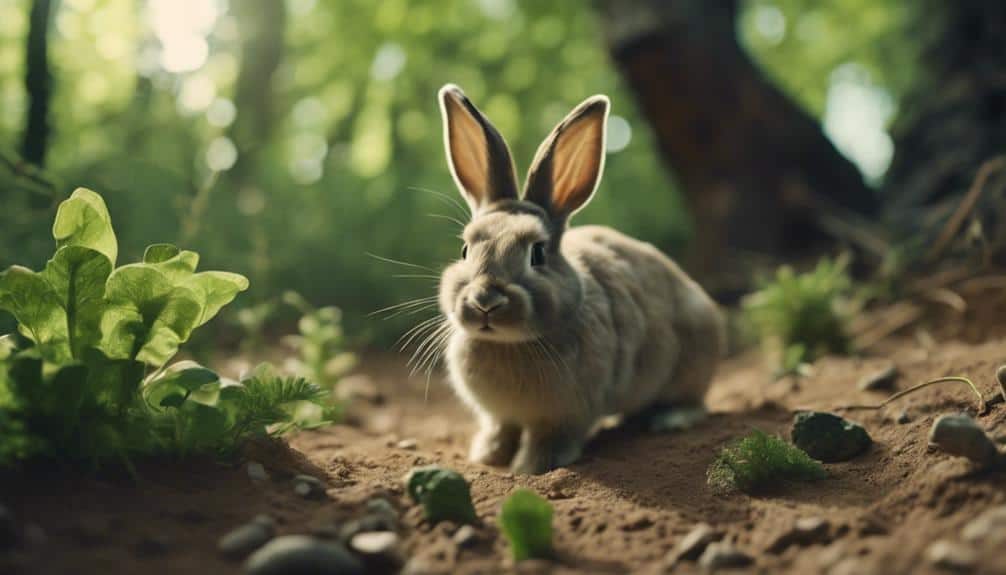
Rabbits are pretty amazing at adapting to different places. They can live in forests, meadows, deserts, and even cities! Their ability to handle all these different environments is really impressive.
One reason they do so well is because of their super senses. Rabbits have really good smell, hearing, and vision. This helps them spot danger and find food easily, which is a big part of how they survive in the wild.
And let's not forget about their physical skills! Rabbits are fast and nimble, reaching speeds of up to 45 miles per hour. This helps them escape from predators in a flash. Plus, their digestive system is top-notch at getting all the nutrients they need from their plant-based diet. It's like they're built to handle any situation they come across!
Frequently Asked Questions
What Is the Difference Between Rabbits and Bunnies?
When you're talking about rabbits and bunnies, just keep in mind that 'bunny' is usually a cute way to refer to young rabbits. Bunnies tend to be playful and curious, showing off their youthful energy. Knowing these little differences can make your time with these adorable animals even more enjoyable.
What Are the 7 Levels of Classification for a Rabbit?
When we classify a rabbit, we begin by placing it in the Kingdom Animalia. This basically means that rabbits are living, breathing animals. From there, we move on to the Phylum Chordata, indicating that rabbits have a spinal cord and are vertebrates.
Next up is the Class Mammalia, which tells us that rabbits are warm-blooded animals that give birth to live young and feed them with milk. Then comes the Order Lagomorpha, which sets rabbits apart as being closely related to hares and pikas.
As we delve deeper, we reach the Family Leporidae, highlighting the specific family to which rabbits belong. And finally, we pinpoint the Genus and Species of the rabbit, which further distinguishes it from other animals in the same family.
Each level of classification helps us understand more about rabbits, from their overall characteristics to their specific habitats and behaviors. It's like a roadmap that guides us through the unique traits that make rabbits the furry, hopping creatures we know and love.
What Are 5 Interesting Facts About Bunnies?
Bunnies have some interesting ways of communicating with each other. For example, they thump their feet on the ground to warn others of danger. It's like their way of saying, "Hey, watch out!"
Another cool thing about bunnies is that they love to chew on hay. It's not just a snack for them – it's actually really important for their digestion. So, when you see a bunny munching on hay, know that it's keeping their tummy happy and healthy.
Did you know that bunnies have a unique way of showing affection? They'll nuzzle and groom each other as a sign of love and friendship. It's like their version of a hug or a kiss.
Bunnies are also super fast and agile. They can hop and dash around with incredible speed, which comes in handy when they need to escape from predators or just have some fun.
Lastly, bunnies have a keen sense of hearing. Their big ears can pick up even the quietest sounds, helping them stay alert and aware of their surroundings. It's like having built-in radar!
What Are 3 Differences Between Rabbits and Hares?
Rabbits and hares have different tastes when it comes to food. Rabbits are all about that herbivore life, chomping down on grasses and veggies like there's no tomorrow. On the other hand, hares mix it up a bit with a diet that includes twigs and buds. This difference in diet really shakes things up in their ecosystems.
Conclusion
So, in a nutshell, knowing the small differences between bunnies and rabbits can help you better understand these cute animals. Their looks, how they interact with others, where they make their homes, how they reproduce, if they're wild or domestic, the different fur types they have, and how well they can adapt all play a part in what makes them special.
When you start noticing and valuing these differences, you'll dive deeper into the charming world of these furry creatures. So, keep exploring the interesting world of bunnies and rabbits with a curious eye for all their unique qualities.


